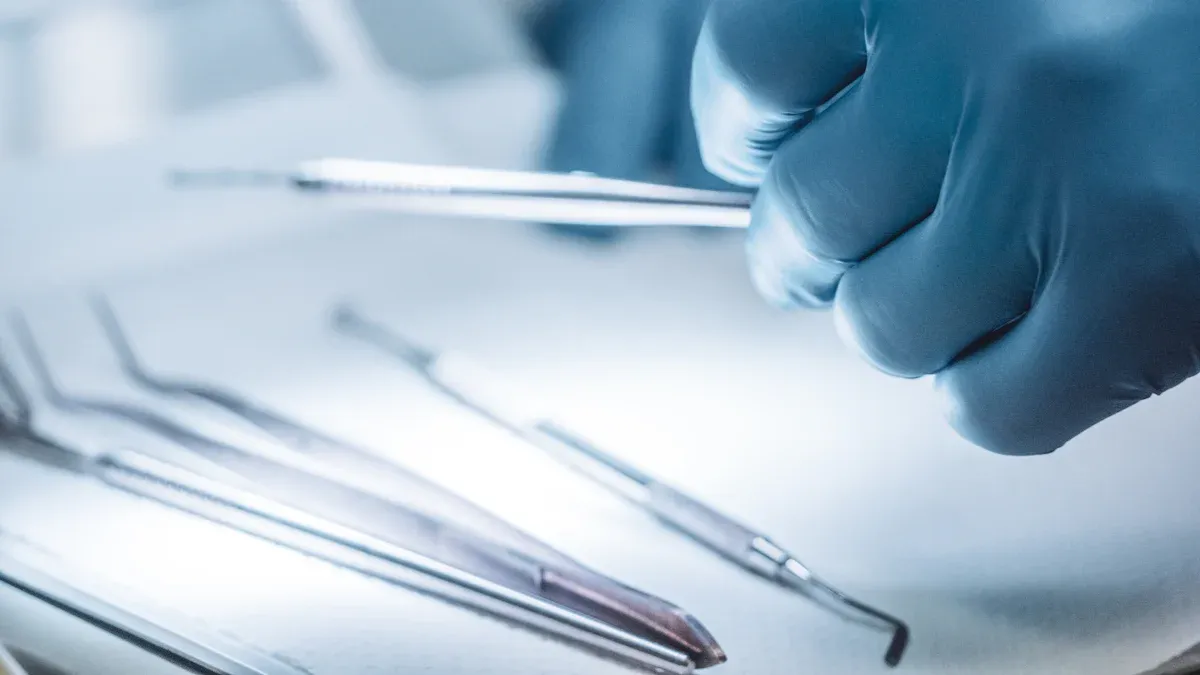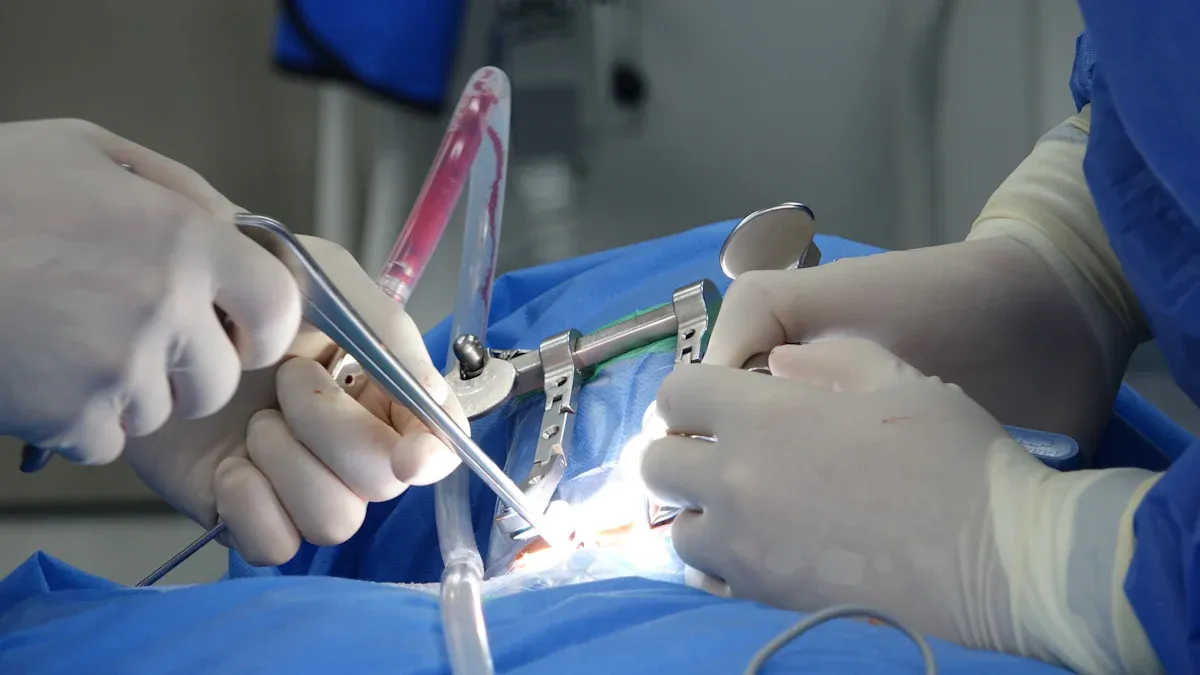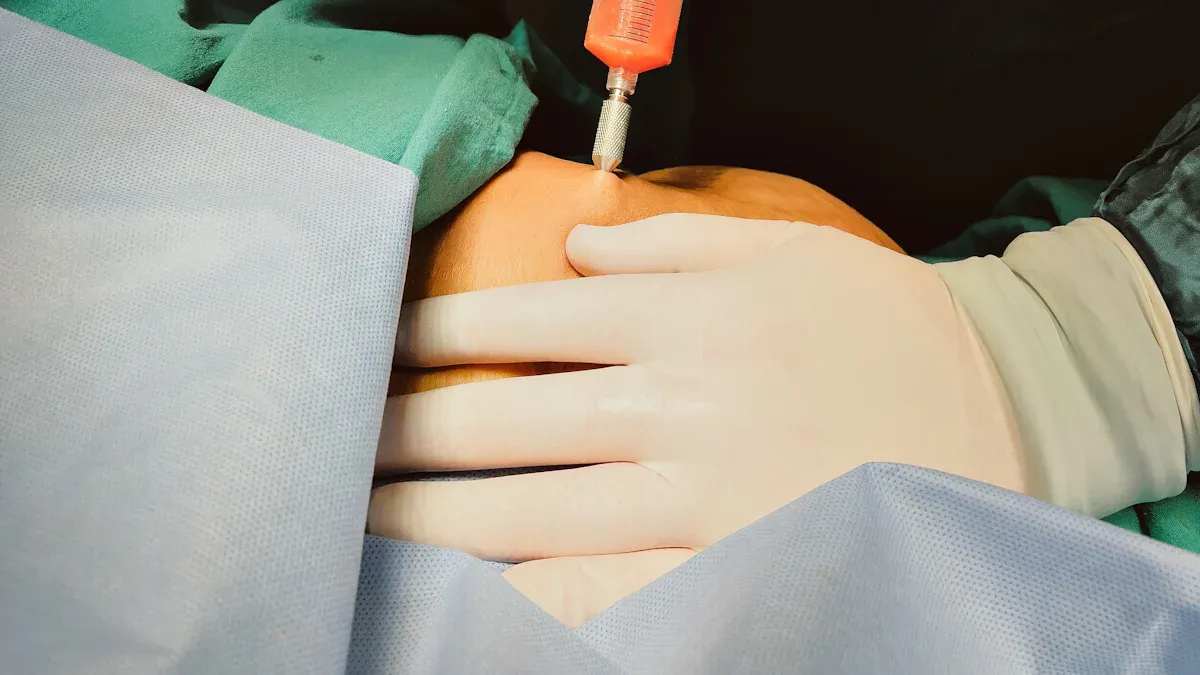Exploring the Medical Uses of High Pushability Nitinol Tubing Delivery Sheaths

A high pushability nitinol tubing delivery sheath is a tool doctors use. It helps them put other medical devices inside the body. Nitinol tubing gives the sheath both strength and flexibility. Medical teams use nitinol tubing because it bends but does not break. Many heart procedures use high pushability nitinol tubing delivery sheaths. Nitinol tubing helps doctors reach hard places in the body. This is important during minimally invasive procedures. Medical professionals trust nitinol tubing because it works well. Nitinol tubing also helps with minimally invasive surgical tools. Heart surgeries need nitinol tubing for safe and careful results.
Nitinol tubing is special in medical devices because it helps with both surgeries and minimally invasive procedures.
Key Takeaways
High pushability nitinol tubing delivery sheaths are strong and bendy. They help doctors put medical devices in the body safely.
Nitinol tubing can bend a lot but does not break. It goes back to its old shape, so it is good for small and twisty blood vessels.
The tubing is safe for the body and does not rust. This lowers risks for patients and helps with long-term implants.
Doctors use nitinol tubing for the heart, brain, and bones. It helps them be more exact, have better control, and helps patients heal faster.
Nitinol tubing has special features that make medical results better. It lowers problems and helps devices work well in the body.
High Pushability Nitinol Tubing Delivery Sheath

What Is It?
A high pushability nitinol tubing delivery sheath is a special tool. Doctors use it to help put other devices, like stents, inside the body. The main parts are strong nitinol tubing, a bendy tip, and a tough outside layer. Nitinol tubing is the main part of the sheath. This material makes the sheath strong and bendy. Medical teams like nitinol tubing because it bends but does not snap or fold. The device needs to move through twisty blood vessels. Strong nitinol tubing helps the sheath keep its shape and go back to normal after bending.
Nitinol tubing is different because it has superelasticity and shape memory. These features help the device move through tricky paths in the body and keep its shape.
Doctors use the high pushability nitinol tubing delivery sheath for heart procedures. The device helps place stents and other tools exactly where needed. Nitinol tubing also helps deliver new medical devices in other areas, like the brain and bones.
Key Features
The high pushability nitinol tubing delivery sheath has many features that help it work well in medical procedures:
Nitinol tubing has superelasticity and shape memory. The device can bend and flex, then go back to its shape. This helps doctors move through tight or curvy blood vessels.
Strong nitinol tubing does not kink or break. The device stays safe even in hard procedures.
The sheath has a special design from the core to the tip. This design makes it both stiff and flexible. Doctors can push the device forward with control.
Surface treatments, like electropolishing and coatings, make less friction. These treatments help the device slide easily and work better in the body.
The tip comes in different shapes, like straight or angled. These choices help doctors steer the device and get past tough spots.
Nitinol tubing lets the device turn well. Doctors can spin the device and control it closely.
The shape and size of the device are made carefully. This makes sure the device works well during real medical procedures.
Doctors pick the high pushability nitinol tubing delivery sheath because it works well and is safe. The mix of nitinol tubing and smart design makes this device important for heart and other medical procedures. Medical teams trust this device to deliver stents and other tools safely and well.
Nitinol Properties
Superelasticity and Shape Memory
Nitinol is special in medical technology because it can bend and stretch, then go back to its shape. These features are called superelasticity and shape memory. Nitinol tubing can handle a lot of bending without breaking. This makes it great for surgeries that do not need big cuts. Doctors use nitinol tubing in tools that move through small or twisty spaces. Shape memory helps the tubing go back to normal after bending. This is important for stents and catheters in surgeries with small cuts.
Researchers learned that nitinol’s superelasticity comes from changes inside its crystals. When nitinol tubing bends, it changes between different forms. This lets the tubing stretch more than other metals. Nitinol tubing can recover from more than 10% strain. This special stretching helps medical tools work well in hard places.
Nitinol tubing can bend and go back to its shape.
Shape memory lets nitinol tubing remember its shape after bending.
Nitinol tubing does not kink, so it is good for surgery tools.
Biocompatibility
Nitinol is used in medical tools because it is safe for the body. Nitinol tubing does not cause bad reactions inside people. This makes it good for implants that stay in the body for a long time. Studies show nitinol devices lower the chance of swelling and other problems. The table below shows how nitinol compares to other materials:
Clinical Metric | Nitinol Devices | Traditional Materials |
|---|---|---|
Recovery Improvement | ~20% better recovery | Not available |
Pain Level Reduction | Faster, less pain | Not available |
Risk of Complications | Lower | Not available |
Doctors use nitinol tubing for heart tools and drug delivery because it is safe. Special surface treatments help nitinol tubing last longer and stop rust.
Durability of High-Strength Nitinol Tubing
High-strength nitinol tubing is strong and lasts a long time. It can bend many times and still keep its shape. Nitinol tubing does not get tired or break easily. Even after millions of bends, it stays strong and flexible. This makes it good for surgery tools and catheters that need to bend a lot.
Nitinol tubing does not rust, which is important for tools that stay in the body. Surface treatments give even more protection from rust. Nitinol tubing stays strong and flexible, even in tough places. Doctors trust nitinol tubing because it works well for a long time.
Nitinol tubing is strong, flexible, and does not rust, so it is a top pick for new medical tools.
Cardiovascular Applications

Stent and Catheter Delivery
Doctors use nitinol tubing in many heart procedures. It helps treat blocked blood vessels with stents and catheters. The high pushability nitinol tubing delivery sheath guides stents through tight arteries. This device lets doctors put stents in the right spot. It is used in minimally invasive surgeries. Nitinol stents can bend and go back to their shape. This helps them fit inside blood vessels. Catheters with nitinol tubing give doctors better control.
Clinical trials show pushability matters for stent placement. In one study, doctors used LVIS stents with a 6-Fr guiding sheath and microcatheters. They pushed the wire to make the stent shorter and place it better. The table below shows some results from this study:
Parameter | Shortening Group | Non-shortening Group |
|---|---|---|
Male: Female | 56:8 | 45:21 |
Symptomatic Cases | 2 (3.1%) | 1 (1.5%) |
Ruptured Cases | 2 (3.1%) | 0 (0.0%) |
Age (years) | Mean 60.7 (41–84) | Mean 61.3 (40–88) |
Dome Size (mm) | 5.5 ± 1.7 (2.3–10.2) | 6.3 ± 4.4 (2.7–23.0) |
Doctors saw less blood flow in aneurysms after stent use. This shows pushability is important for heart procedures.
Structural Heart Procedures
Doctors use nitinol tubing in heart repairs. It helps deliver stents and other devices to the heart. These procedures fix heart valves and close holes in the heart. The device must move through the heart without hurting it. Nitinol tubing makes the device strong and bendy. Doctors can guide stents and catheters very well. This helps patients get better faster. Many heart repair tools use nitinol stents for their shape memory and flexibility.
Neurovascular and Carotid Uses
Nitinol tubing helps in brain and neck blood vessel treatments. Doctors use nitinol stents and catheters for brain aneurysms and blocked carotid arteries. The device must move through tiny blood vessels in the brain and neck. Nitinol tubing lets doctors move the device safely and gently. These medical uses help stop strokes and help patients heal. Some bone and nerve surgeries also use nitinol tubing for drug delivery and other tools.
Nitinol tubing makes stents, catheters, and other devices safer and better for heart and blood vessel procedures.
Benefits of Nitinol Tubing
Precision and Control
Nitinol tubing lets doctors have more control in heart procedures. The high-strength nitinol tubing keeps its shape as it moves. This helps doctors put stents and catheters in the right place. Nitinol tubing can bend but does not kink, so doctors can reach tough spots. Its strong and flexible design lets doctors place devices exactly where needed. Many new medical uses need this kind of control. Doctors use nitinol tubing for both stents and catheters in small surgeries.
Nitinol tubing helps doctors put stents in the right place.
High-strength nitinol tubing lets doctors steer tools in hard heart procedures.
Shape memory in nitinol tubing gives doctors better control.
Reduced Trauma
Nitinol tubing helps lower harm to blood vessels and tissues. The body accepts nitinol well because it is biocompatible. High-strength nitinol tubing bends with the vessel, so there is less risk of injury. Stents made from nitinol tubing move smoothly and cause less damage. The smooth surface and rust resistance help stop irritation. Biocompatibility also means less swelling or infection. Doctors see fewer problems when they use nitinol tubing in heart procedures.
Nitinol tubing bends easily and is safe for the body, so it helps keep patients safe during tough medical procedures.
Improved Outcomes
Patients do better when doctors use nitinol tubing in heart procedures. Studies show that using high-strength nitinol tubing works very well. For example:
Both nitinol and bioabsorbable occluders had a 100% success rate for PFO closure.
Complications were low, with no sudden heart stops or device infections.
Heart rhythm problems after surgery were rare and easy to treat.
Patients with nitinol tubing had much less migraine pain, with MIDAS scores dropping from 38.09 to 10.74 after a year.
Nitinol tubing is good for long-term implants because it does not rust and stays strong. Its biocompatibility makes it safe for devices that stay in the body. High-strength nitinol tubing helps doctors get better results in heart and other advanced medical procedures.
Benefit | Nitinol Tubing | Other Materials |
|---|---|---|
Biocompatibility | High | Varies |
Corrosion Resistance | Excellent | Moderate |
Long-term Implants | Reliable | Less reliable |
Precision in Delivery | Superior | Standard |
A high pushability nitinol tubing delivery sheath lets doctors do hard medical procedures. Nitinol tubing is strong and bends without breaking. It is also safe to use inside the body. Many heart procedures need nitinol tubing to put stents and catheters in the right spot. Nitinol tubing helps medical teams because it lasts long and remembers its shape. Medical devices with nitinol tubing help patients get better results. People who pick or use medical devices should know about nitinol tubing and why it is helpful.
Nitinol tubing keeps making medical care better with new ideas and trust.
FAQ
What makes nitinol tubing important in minimally invasive procedures?
Nitinol tubing is strong and flexible. Doctors use it because it bends and goes back to its shape. This lets catheters and stents move through blood vessels safely. The tubing helps stop damage inside the body.
How does the biocompatibility of nitinol benefit patients?
Nitinol is safe for the body. Patients have fewer problems or side effects. Nitinol stents and catheters can stay in the body for a long time. They do not rust or cause many issues.
Why do doctors choose high-strength nitinol tubing for delivery sheaths?
High-strength nitinol tubing is tough and bends well. Doctors pick it because it does not kink or break. This makes it good for hard medical jobs. It helps with drug delivery and surgeries that need careful control.
What are the main uses of high pushability nitinol tubing delivery sheaths?
Doctors use these sheaths for heart and brain procedures. The sheaths help put stents, catheters, and other tools in place. They work with new stent technology. These sheaths help doctors do better in small surgeries.
See Also
Understanding Nitinol Tubing Uses Within Modern Healthcare Devices
How Nitinol Tubing Drives Progress In Medical Technology
Ways Nitinol Tubing Transforms The Future Of Medical Devices
The Importance Of Nitinol Tubing In Advanced Medical Uses
Nitinol Tubing’s Critical Role In Minimally Invasive Surgeries

